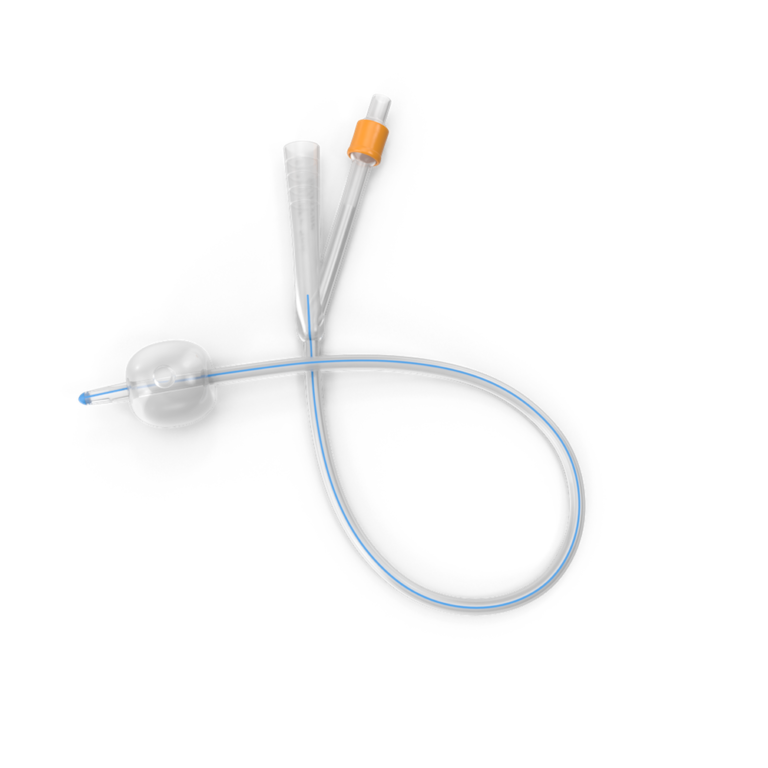Are you a caregiver caring for a patient who is currently using a urinary catheter? Read on to find out more about how to care for your loved one who is using a urinary catheter. A Urinary Catheter is generally used when the patient is unable to urinate by himself/ herself so as to prevent a build up in urine and cause pressure in the kidneys. For example, if the patient faces urine obstruction due to prostate enlargement or nerve damage. A Urinary Catheter is also used for patients who are unable to control their urine.
What is a Urinary Catheter?
A Urinary Catheter is a hollow, flexible tube that collects urine from the bladder. A catheter tube leads to a drainage bag that is meant to collect the urine. A Urinary Catheter is placed in the bladder by inserting the tube through the urethra, and a small balloon is inflated in the bladder to keep the catheter in place.
Catheter care is important for patients who are reliant on it even for short amounts of time. Caregiving for patients using Urinary Catheter would involve cleaning the catheter, emptying and changing the drainage bags.

Managing Urinary Catheterization
Changing the urine collection bag

-
- Wash your hands thoroughly with soap and water before handling the catheter
-
- Ensure that the end of the urine collection bag is locked securely.
-
- Pinch the Urinary Catheter using your fingers and avoid contact with the ends of the connecting tube.
-
- Remove the urine collection bag from the catheter
-
- Wipe the end of the catheter tube with alcohol wipes
-
- Immediately insert the protective cap of the new urinary bag into the catheter and release your finger punch
-
- Discard of the urine collection bag.
-
- Check that there are no kinks in the tubes and urinary bag
- Changing of the urine collection bag should be done weekly or when it is dirty or damaged.
Emptying the urine collection bag
-
- Wash your hands thoroughly with soap and water before handling the urine collection bag.
-
- Hold the drainage tap over an empty container. Hold the stem of the drainage tap with one hand and pull downwards to open the valve and to drain the urine collection bag.
-
- Pull upwards and lock the urine collection bag
- Don’t touch the tip of the valve or let it touch other surfaces.
Cleaning the urine collection bag
-
- Wash your hands with soap and water.
-
- Disconnect the bag from the catheter tube and immediately connect the tube to another clean urine collection bag
-
- Drain the urine from the bag
-
- Pour soap and water into the dirty urine collection bag and shake it around to clean it.
-
- Open the drainage valve and let the soapy water out.
-
- Rinse the bag with clean and cool water before hanging up to dry
- If the bag has an odour, you can fill the bag with a mixture of 1 part white vinegar and 3 parts water, and shake it around the bag before draining and rinsing.
Cleaning the catheter

-
- Using mild soap and water, clean your genital area where the Urinary Catheter enters your body
-
- Men should clean under the foreskin as well as possible and through the entire length of the penis
-
- Women should separate the labia, and clean the genital area through its entire length
- Clean the Urinary Catheter from the tip when it enters the urethra, and then downwards, away from it.
Preventing infection
-
- Keep the catheter tube and the urine collection bag from kinking. Ensure this by making sure not to sleep or put the pressure on the bag and tube
-
- Do not rest the urine bag on the floor or allow the tip of the drainage bag or catheter tube to touch the floor or other surfaces
- Make sure your hands are clean and washed before handling the catheter tube or urine bag
Things to take note

-
- Call your nurse or doctor in the case if your catheter comes out. Do not attempt to replace it yourself. Changing of Urinary Catheter tubing requires certified training and experience. Hence, it would be wise to engage your trusted nurse from a hospital, or a in-home nursing care in to help you do a procedure change in the comforts of your own home.
-
- In the case where you experience some pain, and there is no urine in your bag, or if you are making less urine than usual, seek your doctor or nurse’s help.
-
- Seek a doctor also if you notice any abnormalities like running a fever, or if your urine has blood clots or has is not clear with clots. It may be an infection.
- Drink more fluids while you are using a Urinary Catheter.
- If you need any urinary catheterization products, you can check out the JagaStore. We deliver these products right to your doorstep.
Award winning Home Care trusted by health professionals – Jaga-Me




